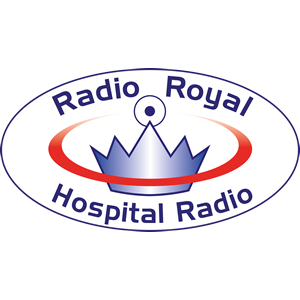
Today's figures show that in May the NHS waiting list in England fell, for the third month in a row. There are now 7.36 million outstanding appointments – the lowest level since March 2023.
Health Secretary Wes Streeting welcomed the reduction in the NHS waiting list of 282,000 since Labour took office, down from 7.64 million last July.
Speaking in the Commons, he highlighted the experience of a young cancer patient receiving timely treatment as an example of the difference he says Labour has brought to the NHS.
But not all waiting times are down.
Sky News analysis shows that in nearly half of 147 NHS trusts with available data fewer people are now being treated for cancer within the target than at the start of the year.
That target is for 85% of cancer patients to begin treatment within two months of their diagnosis.
Only a small number of trusts have achieved this. While 20 trusts met the standard in January, it is down to 15 trusts in May. Performance against the target fell in 62 areas overall between Jan and May, and none of those were meeting the target to begin with.
Among the worst performing trusts are Mid and South Essex, and Hull University Teaching Hospital, with just 42% and 46% of patients beginning treatment within the target time respectively. The biggest increases in waits were in North Cumbria Integrated Care, where the share of people treated within the target period fell from 70% to 50%, and in Liverpool Women's NHS Foundation Trust, the share fell from 44% to just 26%.
See how your local trust is performing in the searchable table below:
An NHS spokesperson said: "Despite the NHS seeing and treating record numbers of people for cancer... we know there is more to do to improve early diagnosis, access to tests and life-saving treatments.
"Our 10 Year Health Plan launched last week sets out some of the ways we will transform cancer care to be fit for the future, including innovation to speed up referral and diagnosis, with more to follow in the National Cancer Plan coming later this year."
It's not only cancer waits where there are big differences in how long you wait for treatment depending on where you access services.
The government has pledged to bring down referral waiting times by 2029, so that no more than 8% patients wait longer than 18 weeks for hospital treatment once they've been referred by a GP.
This has not been achieved in England for a decade, but some areas are doing better than others.
Several trusts are only managing to ensure less than half of their appointments are offered within the time frame, including just 48% at the Countess of Chester Hospital. This compares to the 99.8% of nearly 4,000 patients treated by Kent Community Health within 18 weeks.
Only 13 of the 153 NHS service providers are meeting the target, while many are performing worse than at the start of the year.
The largest decreases were around a 6% decrease in performance, including in Dartford and Gravesham, where performance fell to 60% on target, and in Royal Surrey County Hospital, falling to 55%.
Just over half - 84 - of the trusts are currently managing to complete 60% of appointments within 18 weeks - which is an interim target they are due to meet by March 2026.
Overall, the share of those waiting for longer than 18 weeks has remained mostly static at around 40%. The latest figures show that 39% of the waiting list had been waiting for longer than target in May, compared to 41% in July last year.
In Accident and Emergency, nearly one in four trusts have a greater share of patients waiting for longer than the four-hour target to be seen than in January - despite A&Es tending to be more stretched during winter months. However, performance on this target is better than others overall, and around half of those performing worse are still meeting the target, which is that 95% of patients are seen within four hours of arrival.
To improve and alleviate pressure on hospital services the government says the health service must "reform or die". Labour has set out its vision in a 10-year plan for NHS reform aiming to prioritise community healthcare, shift from late treatment to early intervention, and digitally transform the health service.
But addressing hospital performance and inequalities will be key, Stephen Rock, economist at independent health care thinktank The Health Foundation, told Sky News.
"There is considerable variation across the NHS-particularly post-pandemic. Take delayed discharges, for example: some hospitals discharge patients much faster than others once they're ready to leave. Reducing this variation is essential to maximising the return on NHS investment," he said.
There is no new data available on delayed discharges - where patients are kept for longer than they should be in hospital due to a lack of resource in social care or other services to move them on - as data is only published over winter.
Data from last winter shows that the number of delayed discharges from hospital has barely budged, at just under 14,000 a day on average in January 2025 - with almost identical figures over the past three years.
Thea Stein, chief executive of the Nuffield Trust independent health and social care thinktank, told Sky News that the lack of references to social care in the 10-year plan is "disappointing", as "a proportion of people are stuck in every single hospital in this country because of issues to do with social care and the way in which it is funded," she said.
Social care funding will be addressed separately in a review to be conducted by Dame Louise Casey, which may not reach a conclusion until towards the end of this parliament.
Rising demand and funding challenges
A growing and aging population is one reason demand for healthcare rises every year. Another reason is new technology and treatments, much of which the government is hoping to embrace.
"This is why budgets grow. It isn't purely waste, inefficiency, growing population, and growing ill health," Ms Stein explained.
And while technology offers potential benefits, adopting it is often expensive.
Recent analysis by the Nuffield Trust found that of £22.6bn additional funding between 2023/2024 and 2025/26, 19% will be spent on increased costs of care relating to a growing and aging population, as more people live with health conditions for longer.
Higher demand for new treatments will take up 29% extra funding. The largest cost pressure, however, is inflation-related price rises, including recent pay settlements, which eat into more than half the total uplift in the budget.
Funding allocated to the NHS for day-to-day spending in the latest spending review amounts to a real terms increase of £29bn annually by 2028/29, or a 2.7% rise from 2023/24 levels - the largest uplift for any department.
However, while slightly above the average annual rise for spending reviews since 2010, it is below the 3.3% average increase in the five years leading up to the review, and only slightly higher than average increases from a decade earlier.
And at that time the NHS was not undergoing major reforms.
But the government says that "the era of the NHS's answer always being 'more money, never reform' is over", and that savings made by improving productivity and increasing population health will help them achieve their targets.
The NHS will need to deliver a 2% increase in productivity per year - which means a 2% increase in activity across services from the same level of funding - to meet targets with the funding available. This is more than twice the level that has been achieved in recent years, according to The Health Foundation.
Unexpected shocks - such as upcoming strikes or increasing costs of medicines, could make this more challenging.
The Data and Forensics team is a multi-skilled unit dedicated to providing transparent journalism from Sky News. We gather, analyse and visualise data to tell data-driven stories. We combine traditional reporting skills with advanced analysis of satellite images, social media and other open source information. Through multimedia storytelling we aim to better explain the world while also showing how our journalism is done.

(c) Sky News 2025: New data shows cancer treatment waiting times have increas


 'Physical threat' from Iran on people living in UK has 'increased significantly', watchdog says
'Physical threat' from Iran on people living in UK has 'increased significantly', watchdog says
 This flimsy dinghy most likely took 50 people to Britain today
This flimsy dinghy most likely took 50 people to Britain today
 Officers who confronted Southport killer reveal how they disarmed him - as they are nominated for police bravery award
Officers who confronted Southport killer reveal how they disarmed him - as they are nominated for police bravery award
 Police officer left with broken nose after Manchester Airport brawl tells court she was 'absolutely terrified'
Police officer left with broken nose after Manchester Airport brawl tells court she was 'absolutely terrified'
 King Charles asks RNLI crew whether they 'get a lot?' while discussing small boat crossings
King Charles asks RNLI crew whether they 'get a lot?' while discussing small boat crossings
 Macron-Starmer visit: What difference will 'one in, one out' small boats deal make?
Macron-Starmer visit: What difference will 'one in, one out' small boats deal make?
 Heat health alerts and hosepipe ban issued as third heatwave hits UK
Heat health alerts and hosepipe ban issued as third heatwave hits UK
 Heat deaths in England and Wales could surge 50-fold by 2070s, study warns
Heat deaths in England and Wales could surge 50-fold by 2070s, study warns










